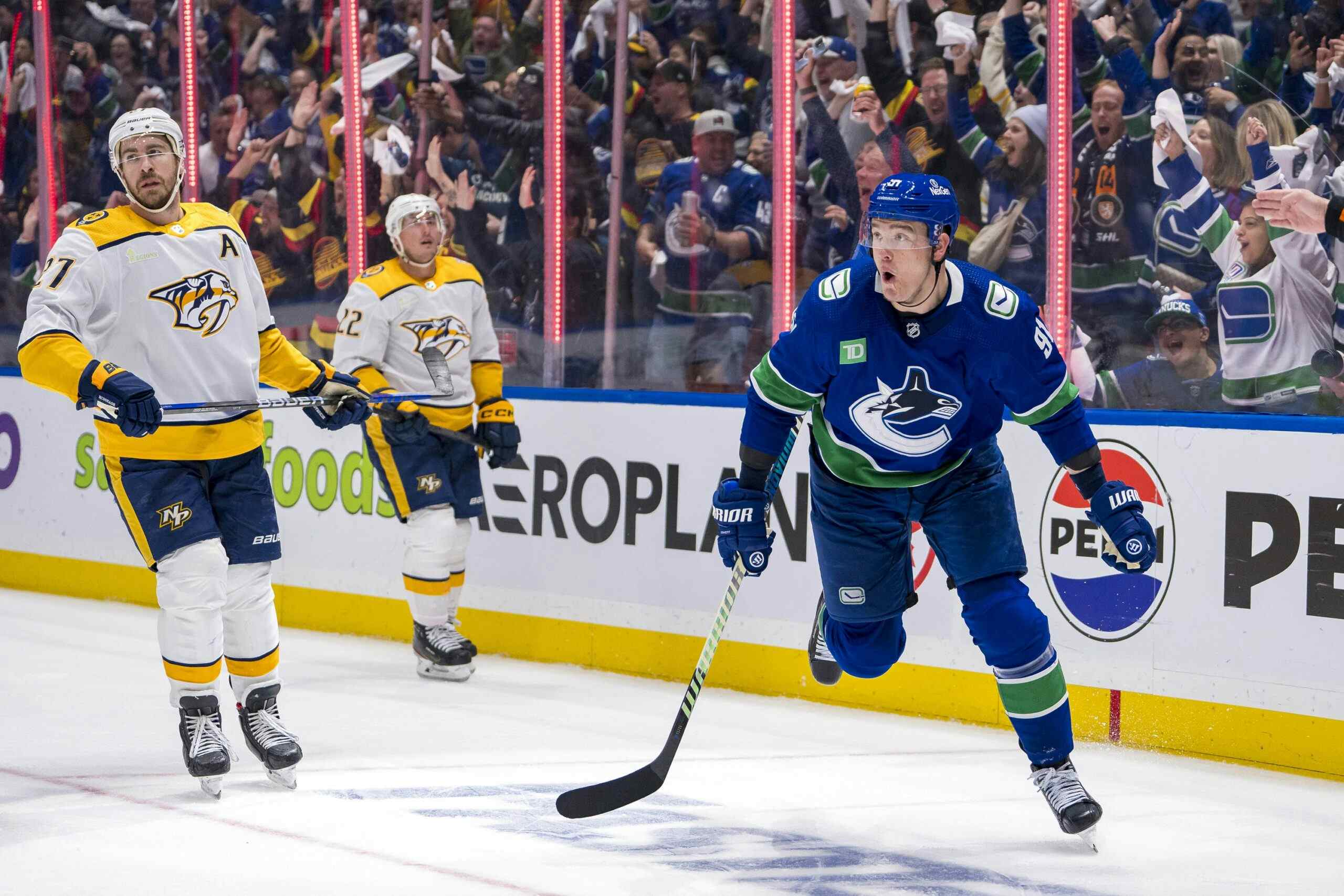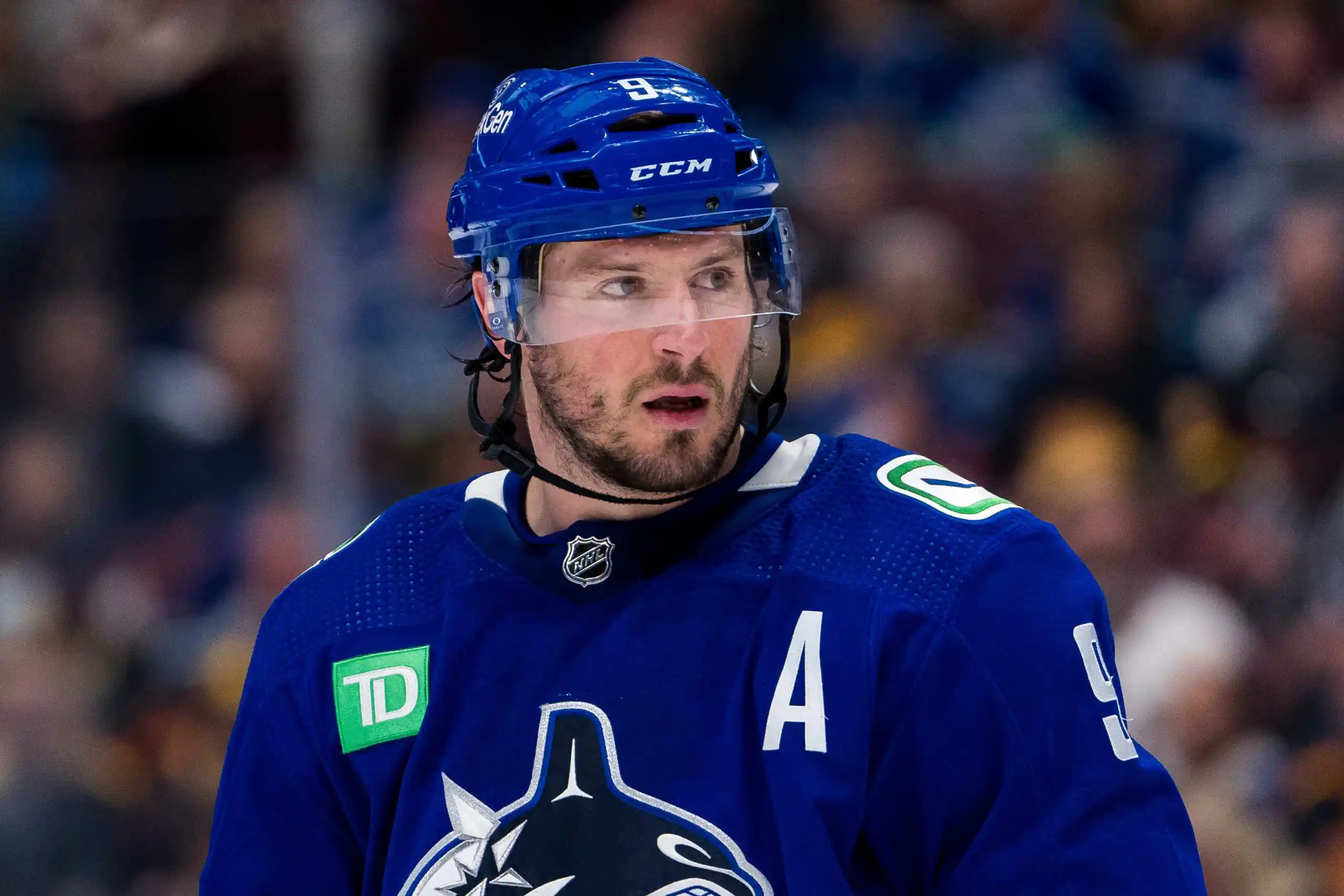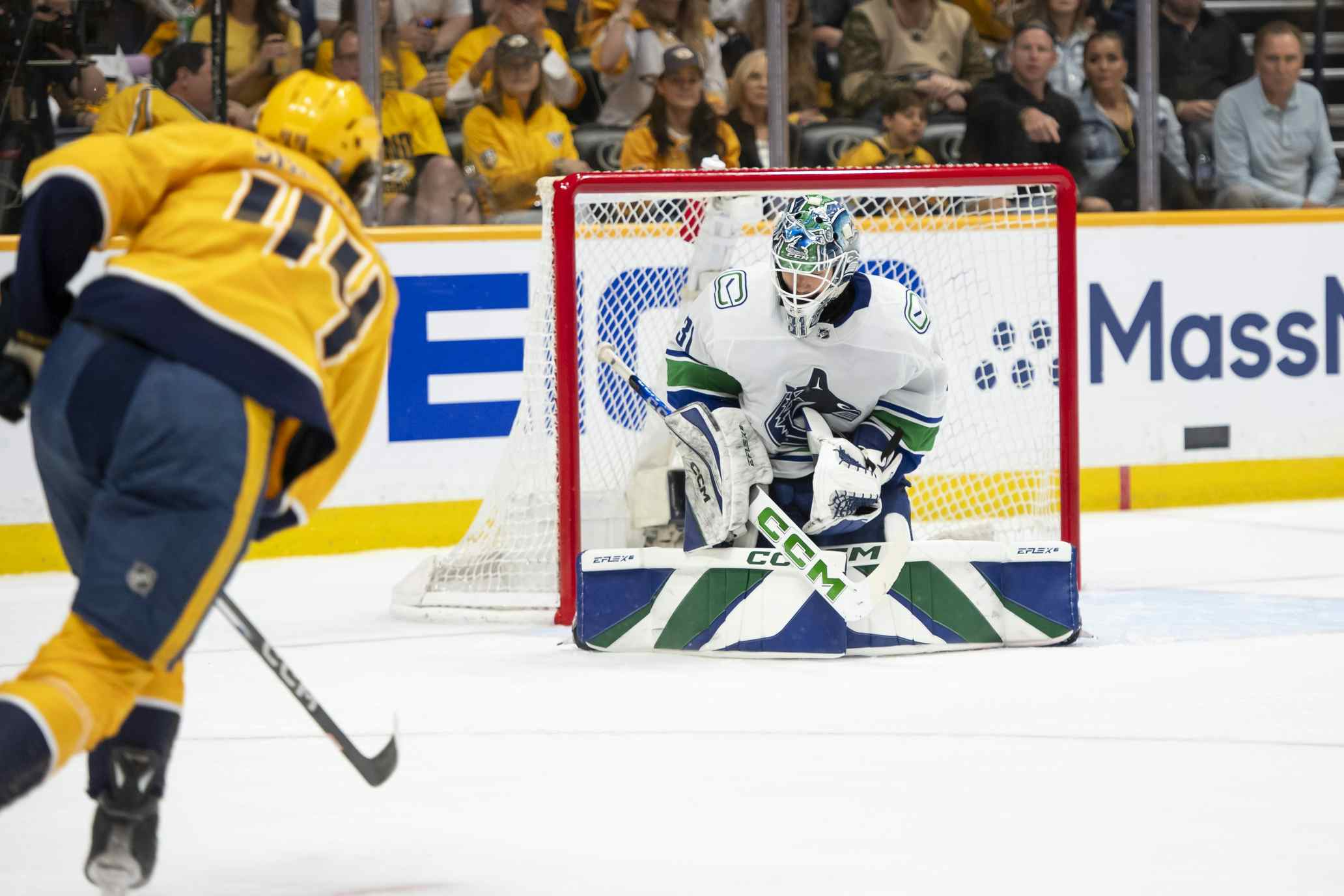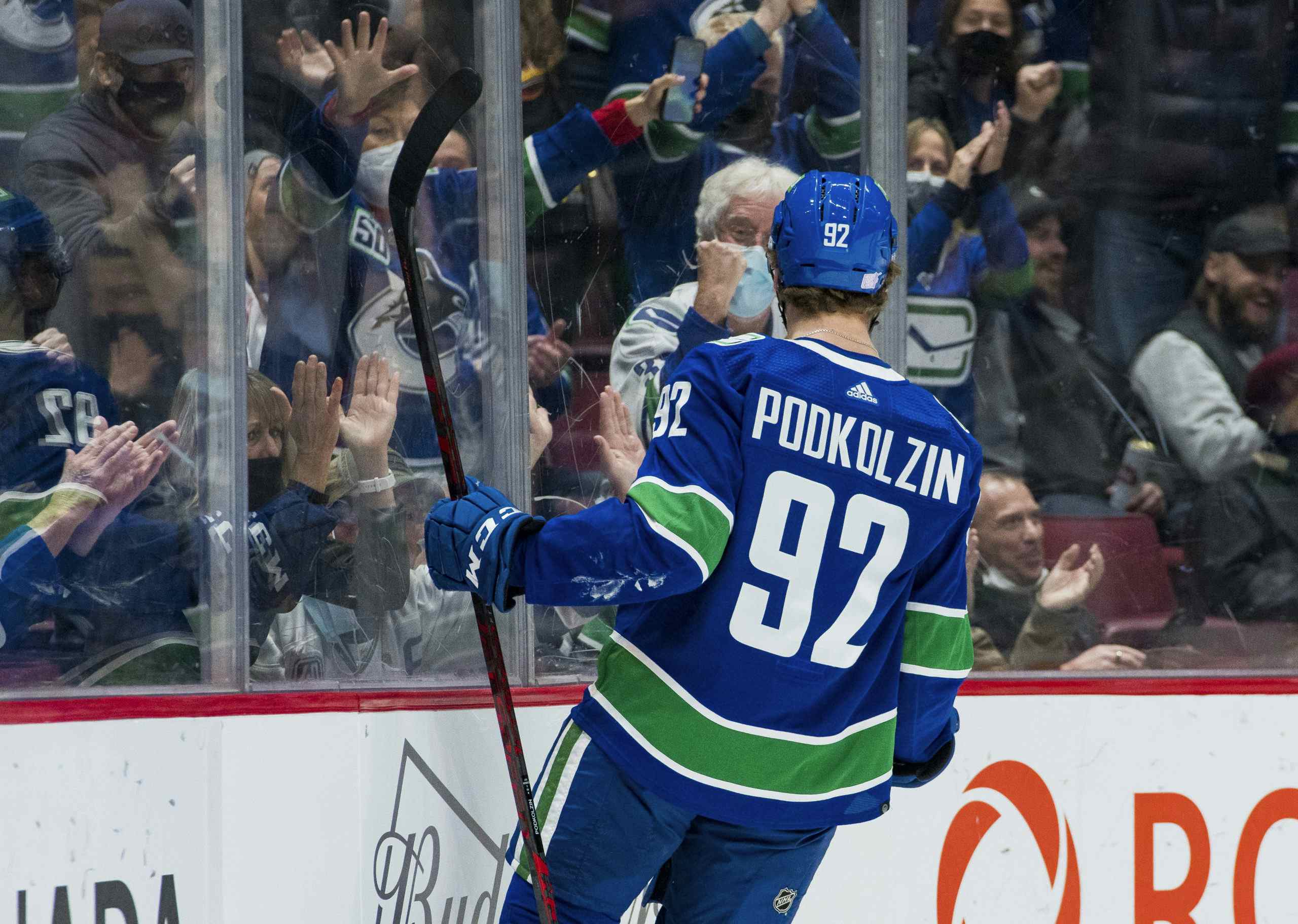Why Do We Care About Draft Picks?
7 years ago

Jim Benning has taken a lot of heat in this market over the past year or so, and with good reason. He’s haemorrhaged assets at an alarming rate, been on the losing side of his trades more often than not, and signed a number of players to above-market-value contracts. For a moment, however, I’d like to cut through the negativity and talk about something Jim Benning has always done remarkably well: finding talent in the draft.
Players selected by the Canucks under Jim Benning have already played a combined 137 NHL games. That’s an impressive feat, even if the argument could be made that those players may have been better suited spending some time in the AHL last season. It’s doubly impressive when one considers that Jim Benning has only been at the helm for a total of two NHL drafts, and the scouting department’s two biggest crown jewels- Brock Boeser and Thatcher Demko- have yet to play a single game in the NHL.
It’s what makes this Gudbranson trade so difficult to swallow. It’s also what makes it so curious when Jim Benning’s defenders say things like this:
Obviously, a team is not going to land a prospect of Crosbyesque or Stamkosian pedigree with a second round pick. But what if I told you they could land a top-line forward, one who’d play over 800 games, most of them on a team’s top line, and average over .07 P/GP over that time span? Would you trade that player for Erik Gudbranson? Better yet, would trade that player and Jared McCann for Erik Gudbranson?
If you think the suggestion is outlandish, you should know that the Buffalo Sabres drafted such a player with the 55th overall pick in the 2001 NHL Entry Draft. That player was Jason Pominville, and they didn’t even need a high second round pick like the one Vancouver gifted the Florida Panthers to get him. They were able to do it at 55.
That’s only one pick, though. You’d need a larger sample size to draw any significant conclusions about Jim Benning’s scouting ability. Thankfully, I looked at how the Sabres’ fared with Jim Benning as their Director Of Amateur Scouting back in very first blog post ever, in my halcyon days as a blogger for OneCanuck.
The value the Sabres were able to get out of their draft picks while Jim Benning was manning the helm as Director Of Amateur Scouting borders on astounding, with the 1998-2004 Sabres outperforming every NHL team’s average by a whopping margin:

Overall, from 1998-2004, the Sabres made 66 picks. The players selected have a total of 10,170 games played, with an average of 154 GP per player. The Sabres selected 17 NHL regulars during this time, just shy of a full roster, for a success rate (percentage of players to play over 200 NHL games) of roughly 25.7%. That’s a record most NHL teams would envy.
I think there’s a legitimate argument to be made that a draft pick made under the influence of Jim Benning may hold more value than one made by the average NHL scouting department. The gap has started to close now that a few teams have begun to employ statistical models in regards to scouting draft-eligible players, but the Sabres’ record under Benning remains impressive all the same.
To get a sense of what kind of value the Canucks have been giving up by dealing away so many draft picks, I took a look at how the Sabres fared from the second round onward from 1998-2004. I purposefully excluded first round picks because, thankfully, Benning has yet to deal one away.
| Round | # Of Picks | Total GP | Average GP | % of players who played over 200 NHL games |
| 2 | 11 | 2961 | 269 | 36% |
| 3 | 6 | 1118 | 186 | 33.33% |
| 4 | 6 | 627 | 104.5 | 16.6% |
| 5 | 6 | 655 | 109.1 | 16.6% |
| 6 | 6 | 890 | 148.3 | 33.33% |
| 7+ | 21 | 1722 | 82 | 9.5% |
Some notable picks from this era include Ales Kotalik (6th round), Ryan Miller (5th round), Paul Gaustad (7th round), Derek Roy (2nd round), Christ Thorburn (2nd round), Jason Pominville (2nd round), Dennis Wideman (8th round), Clarke MacArthur (3rd round), Jan Hejda, (4th round), and Andrej Sekera (3rd round).
Maybe I’m giving Benning too much credit here. After all, the Sabres had an entire department at their disposal when they made these picks, and the draft record in Boston during his time there was spotty, to say the least. The comments section here at Canucks Army is usually filled with pleas to be more positive when assessing what Jim Benning has done, so in this case, I’m going to give him the benefit of the doubt.
During his tenure as the Director Of Amateur Scouting in Buffalo, the Sabres yielded three or more NHL regulars in five of six drafts. Unfortunately for their 1999 class, Mike Zigomanis and Doug Janik missed the 200- game threshold we use to define “NHL regular” by 3 and 10 games, respectively.
This is why we care about draft picks.
This is why every team should care about draft picks. Especially if that team is run by Jim Benning, who should understand the value of draft picks better than just about anyone in the National Hockey League.
The problem isn’t that Jim Benning can’t do anything right. The problem is that Jim Benning has been so terrible at getting fair value back in the trades he’s made that he’s actively shooting himself in the foot and preventing this organization from playing to its only strength.
Some time ago, Jim Benning said he feels he can expect every draft to yield 2-3 future NHLers. If he’s able to replicate even some of the success he had in Buffalo, that’s not an unreasonable estimate. That’s why we pull our hair out over all the mid-round picks he’s included as pot-sweeteners in deals like the one made for Erik Gudbranson this week: At some point, the sum of the value being sent out is going to exceed the sum of the value coming back in. Regardless of how you feel about Erik Gudbranson, Brandon Sutter, or Brandon Prust, a rebuilding team is not in the position to give up futures for a minor boost in the short-term.
In the brief time Jim Benning has been the GM of the Vancouver Canucks, they have traded away four second-round picks, three third-round picks, a fourth-round pick, two fifth-round picks, and a sixth-round pick. The only significant draft picks they’ve been able to recoup were the 3rd they got for Eddie Lack, and the first rounder they received in a package from Anaheim for Ryan Kesler. You know, the one they used on Jared McCann, who’s not a Canuck anymore.
How on God’s green earth does a team that finished 28th in the standings last season think they’re in a reasonable position to be making moves like this? Especially given what we know about the average value of a draft pick, and that we have evidence to suggest that the Canucks are likely capable of performing at an above-average level at the draft table?
When Jim Benning was hired, it was based largely on his resume as a scout. The team’s goal has been to rebuild through the draft while remaining competitive. It’s not the recommended course to chart, but if you’re going to do it, you’ll need better-than-average performance in the later rounds of the draft. What Jim Benning’s Canucks have been doing is severely limiting the shots at the dart board they’re going to get, and when your aim is as good as Jim Benning’s is purported to be, that’s bound to cost you in the long run.





